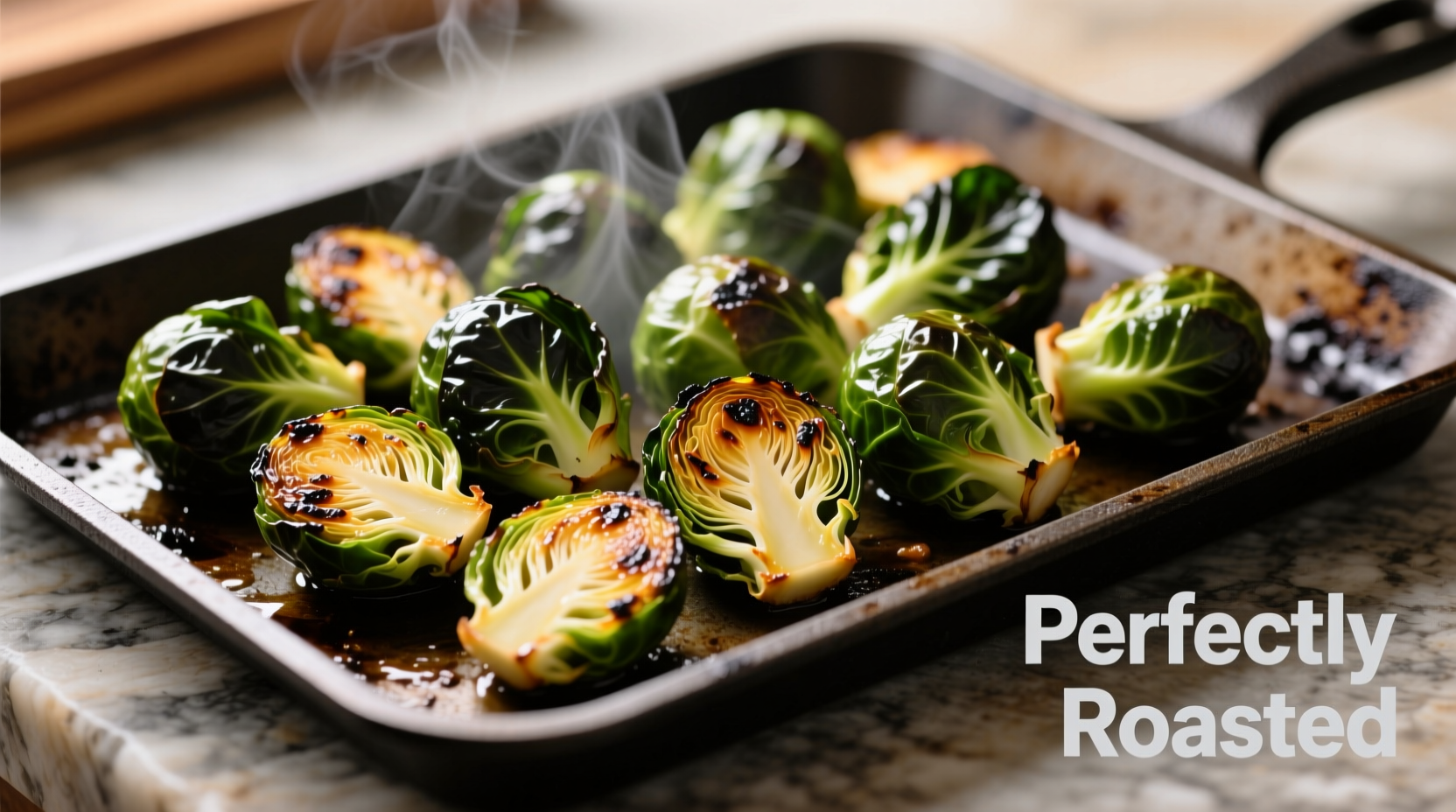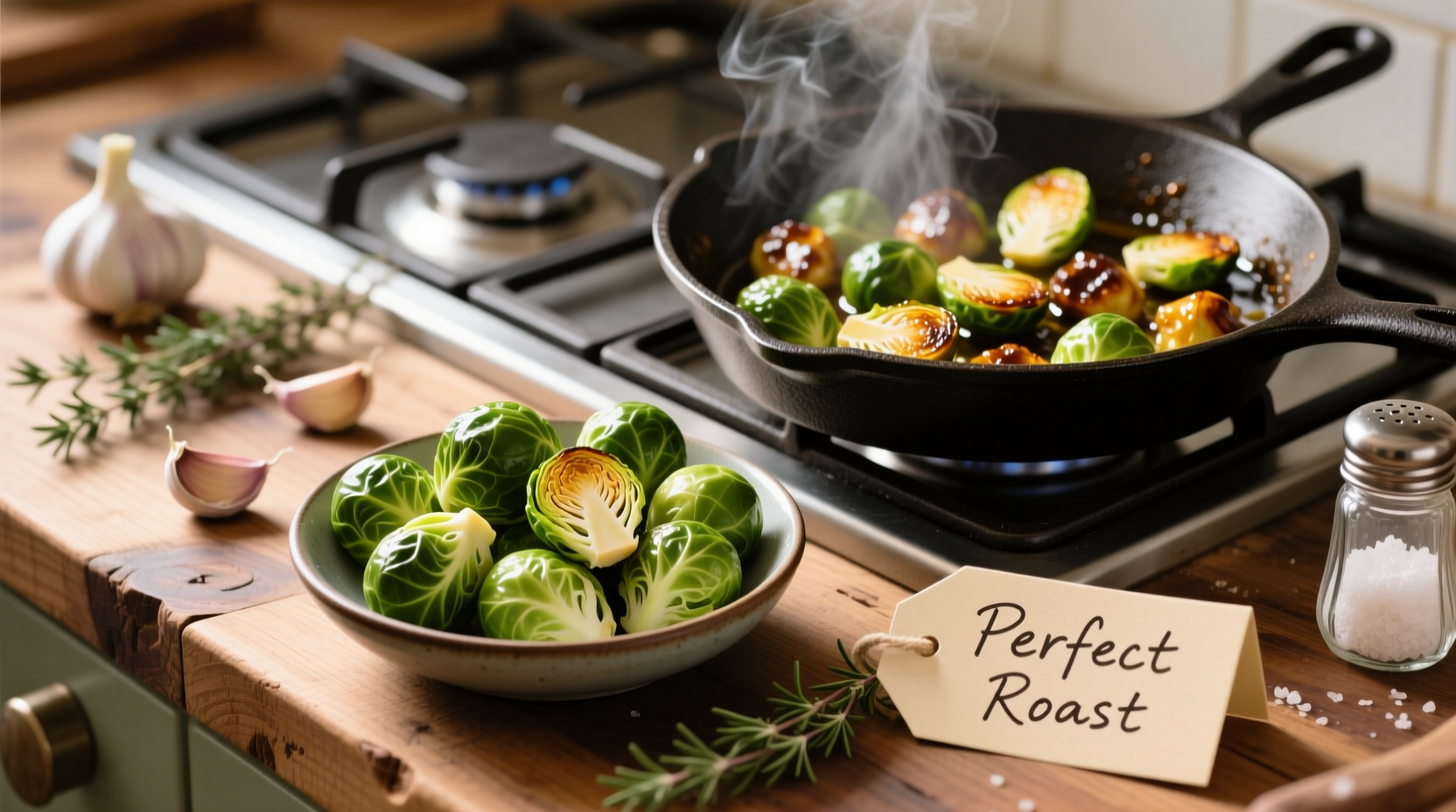Brussels sprouts often get a bad reputation, but when cooked properly, they transform from bitter to beautifully nutty and caramelized. As a chef with decades of experience perfecting vegetable preparation, I've discovered that the key lies in proper technique rather than the vegetable itself. This comprehensive guide reveals four foolproof cooking methods that consistently deliver perfectly cooked Brussels sprouts with crispy exteriors and tender-crisp interiors.
Selecting and Preparing Brussels Sprouts for Success
Before you start cooking, proper selection and preparation make all the difference. Choose firm, compact sprouts with bright green color and tight leaves. Avoid any with yellowing leaves or soft spots, which indicate age. Smaller sprouts (about 1 inch in diameter) tend to be sweeter and more tender than larger ones.
Proper preparation is crucial for even cooking:
- Trim the dry stem end without cutting into the sprout
- Remove any loose or damaged outer leaves
- For uniform cooking, cut larger sprouts in half vertically
- Wash thoroughly in cold water and dry completely (wet sprouts steam rather than roast)
| Preparation Method | Best For | Time Required |
|---|---|---|
| Whole | Small sprouts (under 1") | 25-30 minutes roasting |
| Halved | Medium to large sprouts | 20-25 minutes roasting |
| Quartered | Very large sprouts | 15-20 minutes roasting |
| Shaved | Raw salads or quick cooking | 5-7 minutes sautéing |
Four Professional-Tested Cooking Methods
1. Perfect Roasted Brussels Sprouts (The Gold Standard)
Roasting transforms Brussels sprouts through the Maillard reaction, creating complex flavors and crispy textures. According to USDA food safety guidelines, vegetables should reach an internal temperature of 185°F (85°C) for optimal texture and safety.
- Preheat oven to 400°F (205°C) with rack in upper third
- Toss prepared sprouts with 1-2 tablespoons olive oil per pound
- Add salt, pepper, and optional seasonings (see flavor pairing section)
- Spread in single layer on parchment-lined baking sheet
- Roast 20-25 minutes, flipping halfway, until deeply caramelized
Professional tip: For extra crispiness, add 1 teaspoon baking soda to the oil mixture. This raises the pH level, accelerating browning while maintaining texture.
2. Quick Sautéed Brussels Sprouts
Ideal for weeknight dinners, sautéing delivers restaurant-quality results in minutes:
- Heat 2 tablespoons oil or butter in large skillet over medium-high heat
- Add halved sprouts cut-side down in single layer
- Cook undisturbed for 5-7 minutes until golden brown
- Flip and cook another 5-7 minutes until tender-crisp
- Add 2 tablespoons broth or water, cover, and steam 2-3 minutes if needed
3. Steamed Brussels Sprouts with Modern Twist
Steaming preserves nutrients while reducing bitterness. For best results:
- Place 1 inch of water in saucepan with steamer basket
- Bring to simmer over medium heat
- Add sprouts and steam 6-8 minutes until fork-tender
- Immediately transfer to ice water to stop cooking
- Toss with vinaigrette while still warm for maximum flavor absorption
Food science research from the Journal of Food Science shows that brief steaming (6-8 minutes) preserves up to 90% of vitamin C content while reducing compounds responsible for bitterness.
4. Air Fryer Brussels Sprouts
For hands-off cooking with exceptional crispiness:
- Preheat air fryer to 380°F (195°C)
- Toss sprouts with oil and seasonings
- Cook in single layer (work in batches if needed) for 15-18 minutes
- Shake basket halfway through cooking
- Spritz with lemon juice during last 2 minutes for bright finish

Flavor Pairing Science: Making Brussels Sprouts Delicious
Understanding flavor chemistry transforms Brussels sprouts from bitter to beloved. The key is balancing their natural bitterness with complementary flavors:
- Fat: Olive oil, bacon fat, or butter coats bitter compounds
- Acid: Lemon juice or vinegar cuts through richness
- Sweetness: Balsamic reduction or maple syrup balances bitterness
- Umami: Parmesan, mushrooms, or soy sauce enhances savory notes
For beginners learning how to make brussels sprouts not bitter, start with this simple combination: roasted sprouts tossed with 1 tablespoon balsamic vinegar and 2 tablespoons grated parmesan cheese.
Avoiding Common Brussels Sprouts Mistakes
Even experienced cooks make these errors when preparing how to cook brussels sprouts perfectly:
- Overcrowding the pan - leads to steaming instead of browning
- Not drying thoroughly - prevents proper caramelization
- Underseasoning - Brussels sprouts need more salt than most vegetables
- Undercooking - leaves unpleasant raw, bitter taste
- Using low-quality oil - choose high smoke point oils for roasting
Storage and Reheating for Perfect Leftovers
Proper storage maintains texture and flavor for future meals:
- Store cooked sprouts in airtight container for up to 4 days
- Freeze roasted sprouts on baking sheet before transferring to freezer bag
- Reheat in oven or air fryer at 350°F (175°C) for best texture
- Avoid microwaving, which makes sprouts soggy
- Add fresh lemon juice after reheating for flavor boost
Brussels Sprouts Through History
Brussels sprouts have evolved from regional specialty to global favorite. First cultivated near Brussels, Belgium in the 13th century, they gained popularity throughout Europe by the 16th century. According to historical records from the Royal Horticultural Society, they were introduced to North America during the 18th century but didn't become widely available until the 1920s. Modern breeding has significantly reduced their bitterness, making today's varieties up to 50% less bitter than those from 50 years ago.











 浙公网安备
33010002000092号
浙公网安备
33010002000092号 浙B2-20120091-4
浙B2-20120091-4